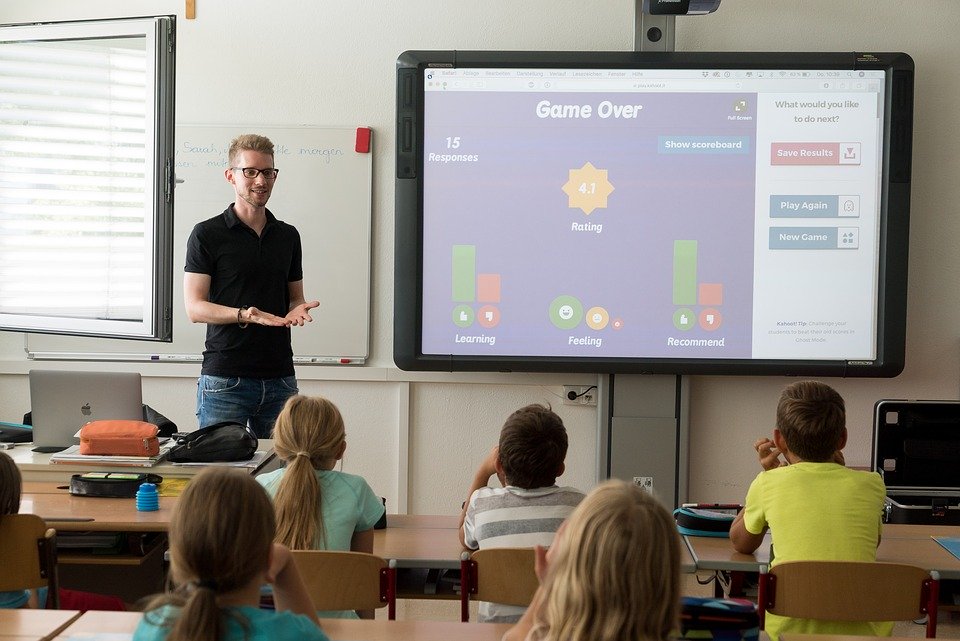Technology has transformed our lives in every possible way and made learning more accessible than ever before. However, some teachers are wary of the introduction of technology to the classroom. Perhaps they’re worried it will detract from learning, or they aren’t sure how to leverage it appropriately.

Thankfully, there are plenty of simple ways to introduce technology to your curriculum. The ten ideas you’ll find below are proven ways to engage students, empower their learning, and encourage classroom participation. Read on to learn about the exciting possibilities of successful technology integration in traditional classrooms.
Create Digital Content
The crux of learning is for students to understand and demonstrate their newfound learning. Of course, some students are less than enthused to work on yet another piece of homework. Worksheets and short handwritten essays can deter them from engaging with the material.
One alternative is to offer your students the chance to create digital content. Ask everyone to manage a student blog where they explain something they learned during class. Alternatively, encourage them to make digital art, PowerPoint presentations, or miniature podcasts to demonstrate their understanding.
Host Conferences
You’re the teacher day in and day out, so why not hand the reins over for a day? You can conference in topic experts or community leaders to your classroom. There are a host of applications available, such as Skype, Zoom, or Discord, and there are plenty of willing participants out there. You can borrow an expert for the day and give your students a change of pace.
Gamify Content
Do you remember the Mavis Beacon typing program? I have those iceberg-hopping penguins to thank for my own typing skills and speed. It’s games like this that I remember decades later, which were so fun to use that it didn’t even feel like I was learning.

Work to gamify your students’ experience where you can. You can build online quiz competitions or search for math, spelling, and science software. It’s a sure-fire way to keep kids and teenagers engaged with the material.
Digitalize Presentations
If you’re still relying on overhead projectors or printed-out lessons for the day, you might find students have a hard time paying attention. Create PowerPoints that utilize graphs, gifs, and videos. Visually stimulating information will draw your students’ eyes back to the topic. For a presentation with a little extra flair, create a Prezi. This moving PowerPoint is easy to compile and fun to watch.
Take Virtual Field Trips
It can be hard to carve out the time and funding to leave school for a field trip. However, you can solve that issue with virtual field trips. Science classes can spend a day at the San Diego Zoo, and the tour comes with online games to test learning. Painting classes can browse through any of the 26 galleries available at the Metropolitan Museum of Art. History buffs will love the Smithsonian’s National Museum of Natural History.
Complete WebQuests
Conducting online research is a crucial skill for students and adults in the workforce. It’s crucial for anyone to be capable of finding the information they need, whether it’s for a research paper or drafting a grant request. Teachers can utilize WebQuests to help grow that skill set.
Ask students to find information and answers to your questions by looking online. They’ll have to read through relevant content to find the answer, thereby learning about the topic at hand and how to discover knowledge.
Connect with Social Media
Integrating social media platforms effectively is an excellent way to boost class participation. Teachers have a habit of viewing social media as disruptive, but it can be one of the most useful technology tools since your students probably use it daily already. You can ask them to submit questions on Twitter using a classroom hashtag. Students won’t forget what they need help with, and you can head into the next lesson aware of what you’ll need to cover.
Collect Feedback
Educators know how to help their students learn… for the most part. However, student achievement can be easily boosted by asking the class what is and isn’t working for them. You can create online surveys and polls or ask them to share their feedback on the class blog.

Giving your students space to share their thoughts shows them respect and can help you gauge what’s working well in class. Maybe you love a lesson plan, but your students find it confusing or boring. Take their feedback to heart and improve the learning experience for everyone involved.
Provide Content for Fast Learners
Some students will inevitably get through their in-class work faster than others. They can then cause distractions for people still working. They might be tempted to start texting, listening to music, or get other classmates to talk to them.
Provide these quick-study students with a fun, quiet activity to work on. Maybe encourage them to try a (gamified) online quiz or do a preplanned WebQuest for the rest of class.
Share a Class Calendar
You have the whole term planned out—what topics you’ll cover, the projects you’ll assign, and when the quizzes are. Why keep that information to yourself? Design a class calendar that your students can access from home. They’ll be able to keep track of the timeline they’re expected to follow.
It can also help those who will be out of town at some point during the school year. Kids and teenagers often have sports or music activities that pull them out of class. Seeing what’s ahead encourages them to practice time management and communication with teachers and parents alike.
About the Author
This article was written by author Scarlett Hobler. Scarlett is an expert on education and methods for improving student learning. She works at PapersOwl to help connect students to the resources they need for success. In addition, Scarlett is a blogger and educational writer. Her work has been published in academic journals regarding the improvement of education, which has received praise through the years.

